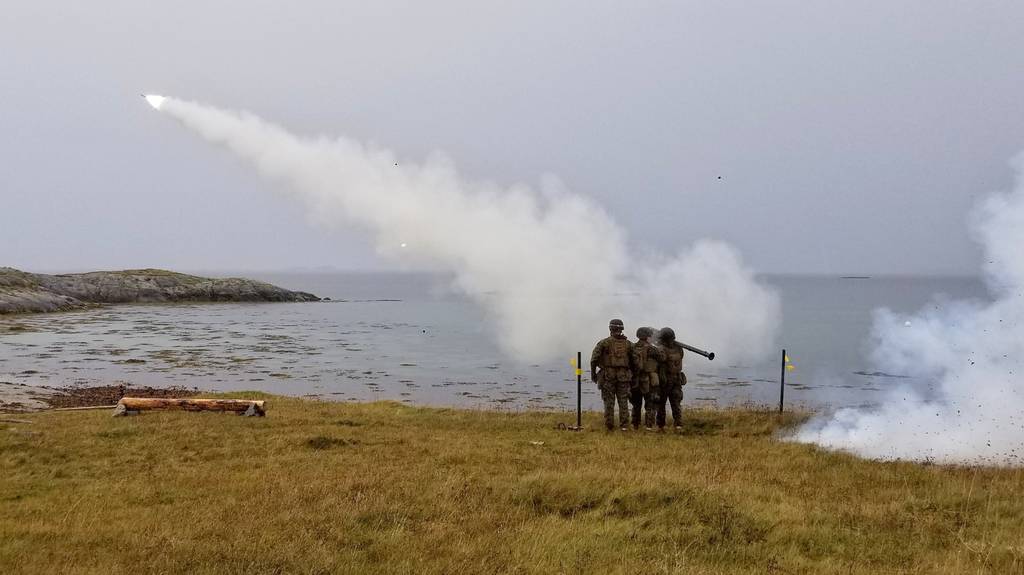
The U.S. Army has recently revealed that it launched an effort to replace Stinger missiles with a next-generation interceptor for Short-Range Air Defense capability as the aging weapon system heads toward obsolescence.
The request for information to industry for a new surface-to-air missile for the Army’s SHORAD system comes as the Pentagon has been sending Javelin and Stinger missiles to Ukraine to help it fight the Russians.
A next-generation interceptor for SHORAD has long been in the works, as detailed in fiscal 2022 budget documents nearly a year ago.
The plan is to award a contract in the second quarter of FY23, the documents note, with design, development, prototyping and performance assessment ongoing through the fourth quarter of FY28.
Stinger can be fired from a shoulder-launched system, but the Army rapidly fielded a Stryker-based SHORAD system equipped with Stinger missiles to Europe last year in response to an urgent request in theater. The Army is preparing to field a complete Stryker-based SHORAD battalion by the end of 2022.
The service will also add a 50-kilowatt class laser weapon to the SHORAD system and is outfitting four prototypes with the capability as it prepares to hold a competition to build more.
“The Stinger-Reprogrammable Microprocessor (RMP) will become obsolete in [FY]23 and Stinger Block I is undergoing a service life extension to extend its end of useful life,” the RFI notes. “The current Stinger inventory is in decline.”
According to the RFI, the Army plans to begin design and development of the replacement missile in FY23, which will lead to production of 10,000 M-SHORAD “Inc. 3″ missiles beginning in FY27.
The RFI calls for soldier-portable solutions but also notes the system must be capable of integration with the Stinger Vehicle Universal Launcher (a component in the Increment 1 Stryker-based SHORAD system already fielded).
The Army expects the new missile to offer “improved target acquisition with increased lethality and ranges over current capability,” the RFI states.
Potential candidates should be ready to conduct a technology demonstration in FY24, the RFI notes, that consists of “digital simulation, hardware in-the-loop and/or live-fire demonstration.” These systems should be ready for an operational demonstration in FY26 that will include live-fire engagements, according to the solicitation.
The process also adds a Proximity Fuze (PROX) capability to improve its effectiveness against unmanned aircraft system threats “by eliminating the need for hit-to-kill,” which means when the missile gets close to a target, the warhead explodes and anything within its burst radius is taken out.
The U.S. Army has recently revealed that it launched an effort to replace Stinger missiles with a next-generation interceptor for Short-Range Air Defense capability as the aging weapon system heads toward obsolescence.
The request for information to industry for a new surface-to-air missile for the Army’s SHORAD system comes as the Pentagon has been sending Javelin and Stinger missiles to Ukraine to help it fight the Russians.
A next-generation interceptor for SHORAD has long been in the works, as detailed in fiscal 2022 budget documents nearly a year ago.
The plan is to award a contract in the second quarter of FY23, the documents note, with design, development, prototyping and performance assessment ongoing through the fourth quarter of FY28.
Stinger can be fired from a shoulder-launched system, but the Army rapidly fielded a Stryker-based SHORAD system equipped with Stinger missiles to Europe last year in response to an urgent request in theater. The Army is preparing to field a complete Stryker-based SHORAD battalion by the end of 2022.
The service will also add a 50-kilowatt class laser weapon to the SHORAD system and is outfitting four prototypes with the capability as it prepares to hold a competition to build more.
“The Stinger-Reprogrammable Microprocessor (RMP) will become obsolete in [FY]23 and Stinger Block I is undergoing a service life extension to extend its end of useful life,” the RFI notes. “The current Stinger inventory is in decline.”
According to the RFI, the Army plans to begin design and development of the replacement missile in FY23, which will lead to production of 10,000 M-SHORAD “Inc. 3″ missiles beginning in FY27.
The RFI calls for soldier-portable solutions but also notes the system must be capable of integration with the Stinger Vehicle Universal Launcher (a component in the Increment 1 Stryker-based SHORAD system already fielded).
The Army expects the new missile to offer “improved target acquisition with increased lethality and ranges over current capability,” the RFI states.
Potential candidates should be ready to conduct a technology demonstration in FY24, the RFI notes, that consists of “digital simulation, hardware in-the-loop and/or live-fire demonstration.” These systems should be ready for an operational demonstration in FY26 that will include live-fire engagements, according to the solicitation.
The process also adds a Proximity Fuze (PROX) capability to improve its effectiveness against unmanned aircraft system threats “by eliminating the need for hit-to-kill,” which means when the missile gets close to a target, the warhead explodes and anything within its burst radius is taken out.
`;-->
Headquartered in Singapore with reporters spread across all major regions, GBP Aerospace & Defence is a leading media house that publishes three publications that serve the aerospace and defence sector - Asian Defence Technology, Asian Airlines & Aerospace and Daily News. Known industry-wide for quality journalism, GBP Aerospace & Defence is present at more international tradeshows and exhibitions than any other competing publication in the region.
For over three decades, our award-winning team of reporters has been producing top-notch content to help readers stay abreast of the latest developements in the field of commercial aviation, MRO, defence, and Space.
Copyright 2024. GBP. All Rights Reserved.